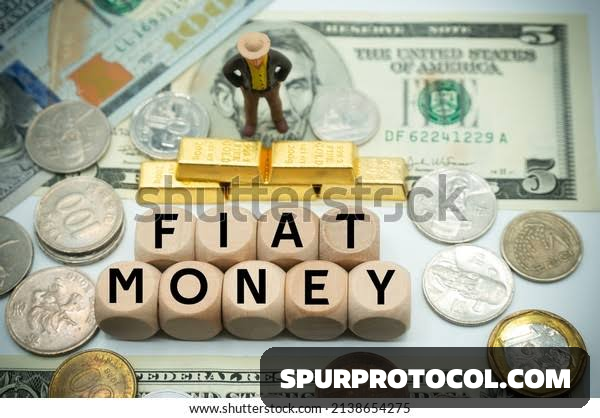FIAT CURRENCIES
Fiat currencies are government-issued currencies . They are not backed by any physical commodity such as diamond or silver. They are backed by governments. The value of fiat money is derived from the relationship between supply and demand and the stability of the issuing government rather than the worth of a commodity backing it.
Go Back

🕒 7:50 PM
📅 Aug 10, 2025
✍️ By kihole
The name fiat is derived from the Latin FIERI word that often translates to "it shall be" or "let it be done" Fiat currencies value is maintained and controlled by the issuing government and there's certainly no utility to Fiat currencies.It can gain an almost Biblical aura of authority, like a movie Pharaoh saying, "So let it be written, so let it be done." So let it be a fiat.
The U.S. dollar, the euro, the British pound, the Japanese yen, the Albanian lek, and the Indian rupee and the Kenyan shilling are all examples of Fiat money.
The use of fiat money is based on trust that central banks will guarantee its value over time (price stability). That is why it is called fiat (from the Latin fiducia, which means trust).
In simple terms, Fiat money is anything that can act as a medium of exchange, store of value, and unit of account. More specifically, fiat currency is money that lacks intrinsic value, instead deriving its worth from its status as legal tender via central banks. To achieve widespread utility, fiat currency must also be durable, portable, divisible, uniform, and limited in supply.
Key features of Fiat currencies
1. Legal tender: Fiat money is created by government regulation and stipulated to be recognized by all in that country as the legal means of payment for goods or services
2. No intrinsic value: Fiat money is not supported by national physical material. Its value is derived entirely from supply and demand and driven by trust. Historically, paper money was originally redeemable for physical commodities, contrasting with today’s fiat system that operates without such backing.
3. Centralized: Fiat money is controlled by the central banks and monetary authorities that issue it.
4. Flexible supply: governments or central banks can increase the supply as they wish (according to monetary policy). Additionally, a commercial bank creates modern fiat through fractional reserve banking and lending.
Inflation risk: Fiat currencies, if not well managed, can be subject to inflation.
5. Uniformity: A 100ksh(Kenyan shilling) note is always the same size, shape, and value, but an elephant can come in many different shapes and sizes.
6. Portability: How portable money is will determine its suitability as fiat currency. For instance, a 100ksh note will easily fit in a pocket.
Advantages of Fait Money.
1. It's a store of value.
2. It helps you keep track of your expenses.
3. It's secure.
4. It's fast.
5. It ensures your freedom and autonomy.
While fiat money offers flexibility and utility, it also carries certain risks and drawbacks. Its value relies heavily on trust in the issuing government, and without careful management, fiat systems can contribute to economic instability or loss of purchasing power.
INFLATION AND HYPERINFLATION are the worst scenarios a Fiat currency can face. Since Fiat isn't backed by any physical commodity or reserve, it might loose its value due to Inflation. It could actually become worthless in the event of hyperinflation.
Since Central Banks are sorely responsible for production of Fiat currencies, they entirely control the economy, and certain mistakes like producing more paper currency than needed could lead to Inflation.
To sum it up, Fiat currencies are produced, by governments through the central Banks and it's value entirely relies on these central banks.
